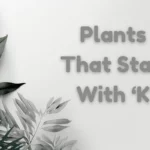How often have you been halted in your tracks by a distinctive flower and taken a moment to appreciate its unusual beauty?
Flowers That Start With R – List of Flowers Begins with the Letter ‘R’

How often have you wished you could recreate that wonder in your own garden? While there are countless beautiful flowers to pick from, here are a few exceptional flowers that begin with R to get your dream garden started.
Rocket Larkspur
Throughout the spring and summer, rocket larkspur blooms for up to two months with blue-violet flowers that resemble fairy bonnets and tall spires. Larkspur is a pretty plant that looks great in a cottage garden. It spreads by self-seeding and grows swiftly. This native of the Mediterranean region occasionally leaves the garden, despite not being particularly persistent.
Rocket larkspur does best in full sun, fertile, loamy soil that is between average and moist.
Ranunculus
The gorgeous, rose-like blossoms of ranunculus, which come in a variety of hues, enhance both fresh bouquets and flower beds. About 250 species make up this genus, which includes aggressively spreading groundcovers and towering 12-foot plants.
In USDA zones 7 and colder, where it cannot survive the winter, ranunculus is frequently considered an annual even though it is actually a perennial.
Ranunculus can be grown in a container with a soilless potting mix or in a sunny area with well-draining soil.
Rocktrumpet
The rocktrumpet, also called Mandevilla, is a summer-blooming plant with enormous, showy, oblong-shaped pink, white, or red flowers. Although a perennial, this is a tropical vine that needs to be transplanted every year or taken indoors during the colder months in all but the southernmost areas because it cannot withstand freezing winters.
Plant rocktrumpet in a spot with full sun and healthy soil.
Red Hot Poker
Red hot poker, also known as torch lily, is a colorful flower that blooms in flamboyant hues of red, orange, and yellow from late spring through October. Its three to eight-foot tall, towering, strong flower spikes go nicely with mounding plants that have rounded leaves and blooms.
Red hot poker is surprisingly resilient and simple to care for despite having a tropical appearance. It thrives on soil that is moist, well-draining, and in full sun.
Rain Lily
This adorable tiny lily, named for its propensity to bloom right after a nice rain, has grassy foliage and star-shaped blooms in white, pink, or orange. Rain lilies, which are only six to twelve inches tall, look good in front borders or by the margins of pathways.
Bulbs for rain lilies should be planted in a sunny area with ordinary to dry soil. The bulbs need to be dug out and brought indoors before the first frost in zones 6 and lower.
Restharrow
The small, pink blooms of restharrow grow in the late summer, from around July till September, and resemble pea blossoms. The UK’s coastal regions and meadows are home to this low-growing, creeping herb. Bees are drawn to it; it looks lovely with other prairie flowers.
Restharrow is a robust plant that does best in full sun and is neutral to acidic soil that drains well.
Rockrose
Rockrose is a fast-growing evergreen shrub that has enormous, fragrant blooms that bloom in late spring and continue to bloom till early summer along with soft, green foliage. The ephemeral flowers typically have a one-day lifespan and are white, pink, or yellow, however, new blooms might persist for up to a month.
This little shrub, which is native to the Mediterranean, thrives in sandy coastal settings and xeriscaping. In addition to thriving in full light, rockrose can survive poor soils.
Rock Cress
The height, form, color, and origin of rock cress vary among its more than 100 species. Many North American species have been moved to the genus Boechera, even though the majority still belong to the genus Arabis.
This adorable tiny herb typically has mounded or erect habit and has four-petaled flowers that are either pink, white, or purple. These low-growing plants thrive in rock gardens, living up to their name.
Roman chamomile
Roman chamomile, which grows more slowly than its German equivalent and is shorter, provides a wonderful ground cover, especially in rock gardens and along flagstone paths. It produces fragrant daisy-like flowers that bloom from early summer to late fall. This appealing herb, which has a stronger flavor than German chamomile, also creates a comforting tea.
Roman chamomile enjoys full to partial sunlight and sandy, well-draining soil. In the right circumstances, it may spread quickly, so exercise caution to keep it tightly controlled.
Rose of Sharon
The rose of Sharon, a flowering plant that belongs to the Hibiscus genus and is not at all a rose, blooms in the late summer and early fall. White, purple, pink, red, and blue are among the colors, which frequently have a dark core.
This easy-to-grow shrub, which is native to Asia, enjoys wet, well-draining soil and full to partial sunlight, though it can endure a variety of environmental factors.
Rose
Without this traditional garden plant, a list of flowers starting with the letter R would hardly be complete. The exquisite, ruffled petals that so many of us are familiar with and like are present in all the different rose kinds, which range from compact shrubs to climbing vines and from white to vivid crimson.
Although their inclination for full or partial sun will vary according to the type, most roses require well-draining soil.
Rosemary
Although it is frequently planted as a culinary herb, rosemary also produces tiny yet gorgeous flowers that can beautify any garden. Enjoy this silvery herb’s powerful smell as you walk by it by planting it in the ground or in pots.
Its tiny blooms bloom along the branches in hues of pink, white, purple, or blue, and its shape ranges from creeping plants that cover the ground to a shrub that can grow up into hedges.
Rosemary is a native of the Mediterranean region and needs whole light and very well-draining soil.
Rudbeckia
Flowers in the genus Rudbeckia frequently have golden petals encircling a dark core, and they are also referred to by the common names black-eyed Susan and brown-eyed Susan. Rudbeckia, a plant that is native to the grasslands of North America, blooms profusely in the late summer and requires little maintenance.
Numerous types of soil work well for Rudbeckia, however, it loves full sun to partial shade.
Round-leaved sundew
The small, spherical leaves of this unusual North American carnivorous plant, which are covered in scarlet, sticky hairs that capture insects, are its most distinctive feature. The tightly curled blooming stem unfolds in the middle of the summer, and tiny white flowers start to blossom up in ascending order.
Round-leaved sundew, which is native to wetlands, thrives in moist, sandy soil and full to partial sunlight.
Rue
Rue is a shrubby, fragrant plant with beautiful blue-green foliage that works well in knot gardens and other tidy hedges. Throughout the summer, it produces clusters of tiny yellow blooms that should be trimmed for fresh bouquets or deadheaded to stop reseeding and spreading.
Rue needs good drainage and full sunlight, but it takes little maintenance and can withstand drought conditions as well as some moderate shade.
Rue anemone
Only nine inches high, this tiny North American woods shrub. Early spring brings forth the little, white or pink flowers of this plant, some of which have double blooms that look like tiny roses. The fact that deer don’t appear to like snacking on rue anemones is an added bonus.
Rue anemone thrives in partial to full shade and medium moisture, making it ideal for woodland or other shade gardens.
Join 25,000+ smart readers—don’t miss out!








